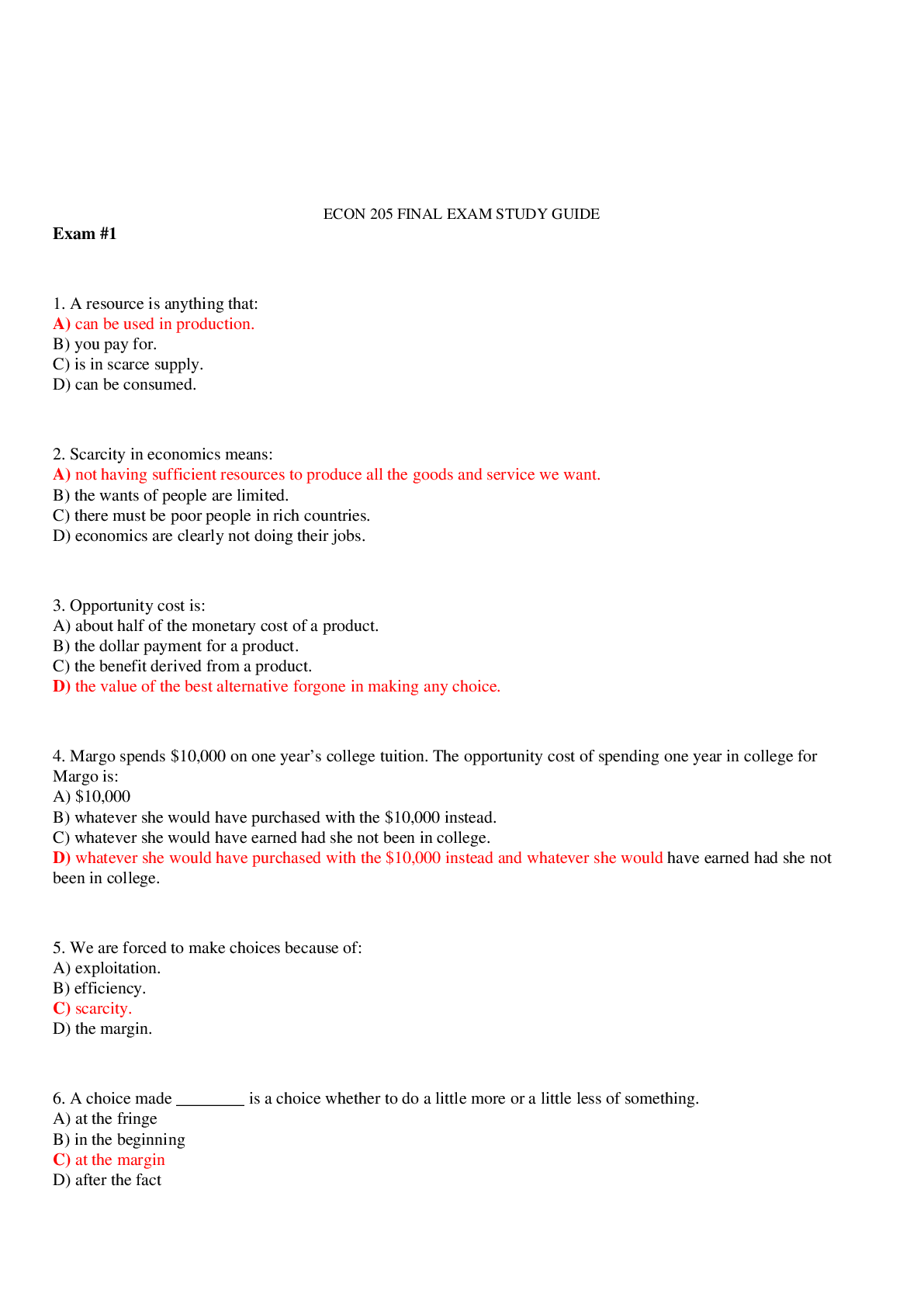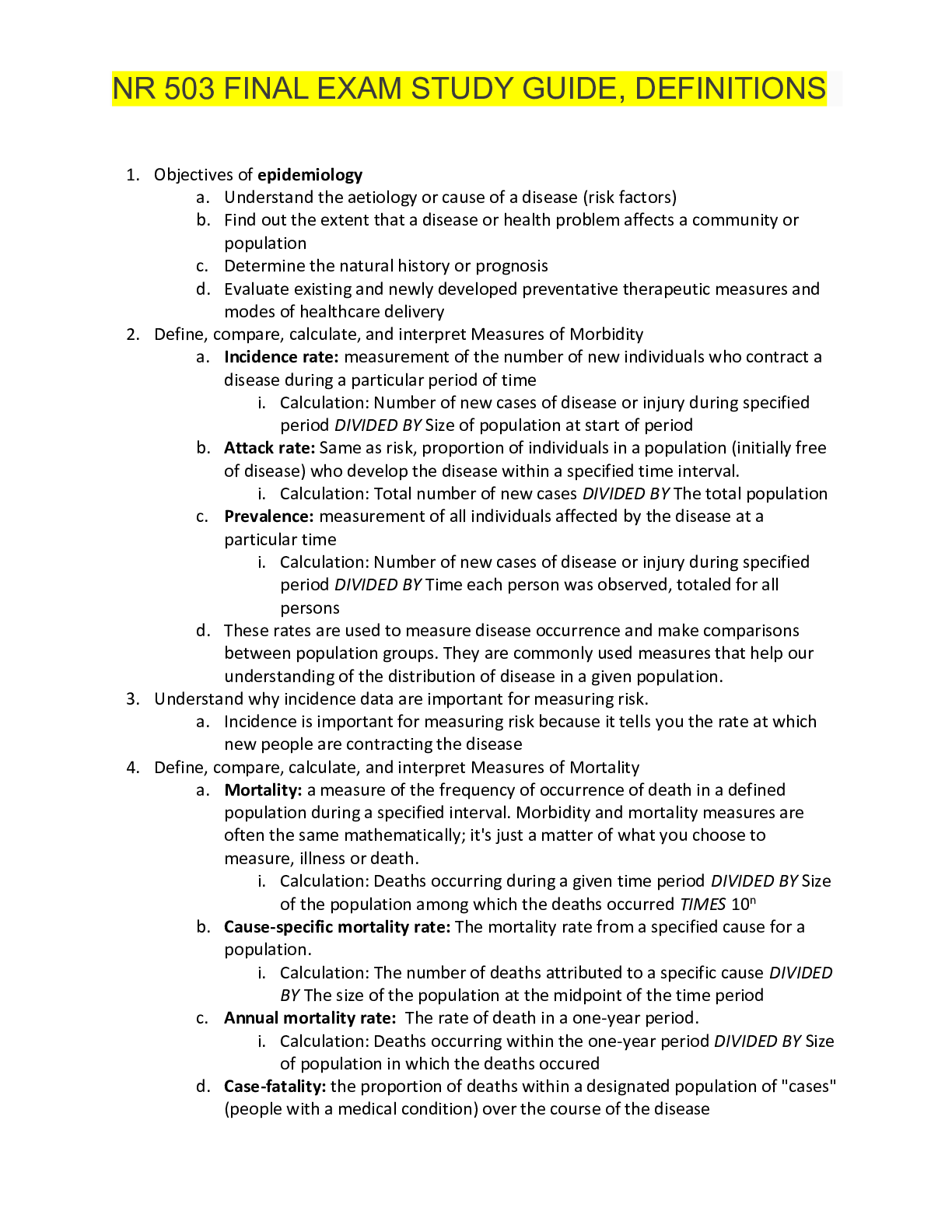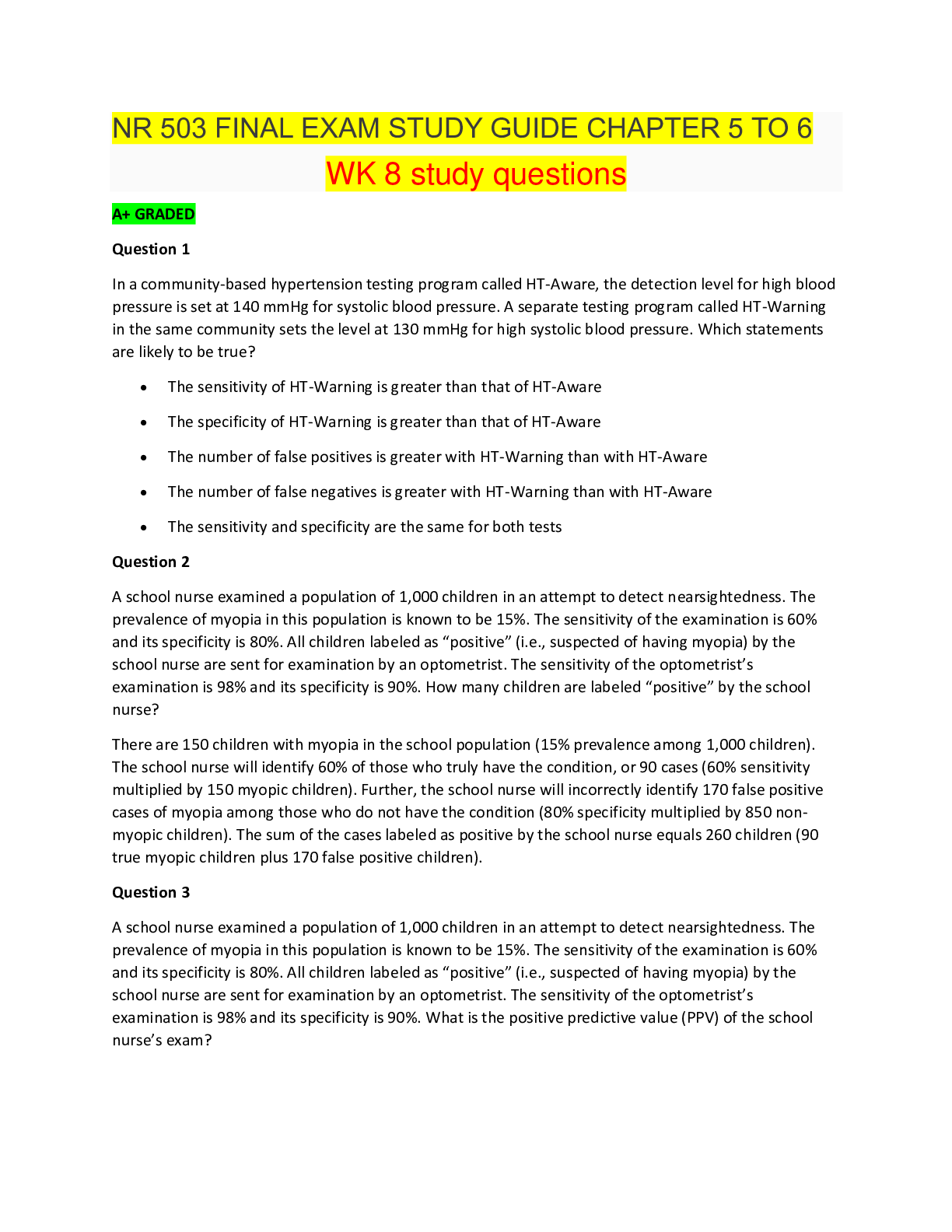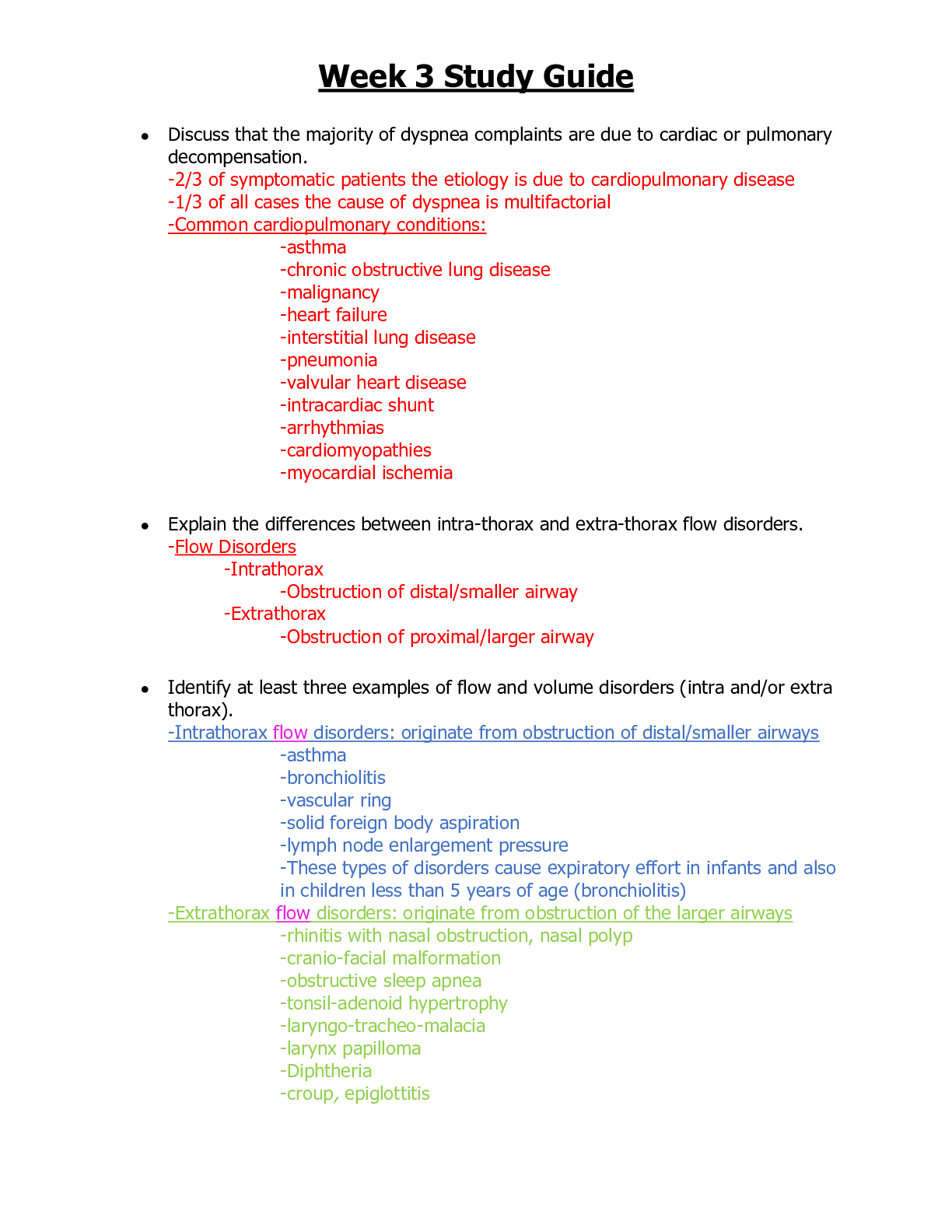NR601 FINAL EXAM STUDY GUIDE WITH COMPLETE SOLUTION GUARANTEED 100%
Document Content and Description Below
NR601 FINAL EXAM STUDY GUIDE Week 5: Glucose metabolism disorders Types of DM 1. Type 1- severe insulin deficiency resulting in reduction or absence of functioning beta cells in the pancreatic isl... ets of Langerhans. Autoimmune disorder which immune system attacks beta cells of the pancreas. This leads to hyperglycemia due to altered metabolism of lipids, carbs, and proteins. Initial s/s of hyperglycemia. Subjective findings- polyuria, polydipsia, nocturnal enuresis and polyphagia with paradoxical weight loss, visual changes and fatigue. Objective-dehydration (poor skin turgor and dry mucous), wt loss despite normal/increase appetite, reduction in muscle mass. DKA-fatigue, cramping, abnormal breathing **3 main ways someone with diabetes will present before diagnosed: Acute, subacute, and asymptomatic. --Acute- This is the most severe presenting situation and can be life threatening for both type I and type II diabetes. This individual becomes very sick over a relatively short period of time, usually only a couple of days. Now symptoms will include things like nausea, vomiting, and abdominal pain and this often results in severe dehydration, and as such the individual may even become confused or unconscious as a result. In type I diabetes, this is known as diabetic ketoacidosis, or DKA for short. And it is how about 30% of individuals with type I diabetes will initially present before diagnosis. In type II diabetes, the acute presentation has a much longer name. It's known as hyperosmolar nonketotic state, or HHNS for short, and it's much less common than DKA as it's the initial presentation for only about 2% of individuals with type II diabetes. Now the difference between DKA and HHNS has to do with the difference between the underlying mechanisms of type I diabetes and type II diabetes. Now the most important difference is that in DKA the individual will become acidotic due to the production of ketoacids, hence the name diabetic ketoacidosis as opposed to hyperosmolar nonketotic state where ketoacids are not produced. --Subacute- mild to moderate presentation that occurs over a period of weeks to months. And these individuals or maybe someone close to them notice that they are generally just not feeling as well as they normally do and they may experience symptoms of fatigue, increased thirst, frequent urination, or even weight loss. Now, once again this can occur with either type I or type II diabetes. And in type I diabetes, this is the most common form of presentation before diagnosis, accounting for about 70% of individuals with type I diabetes. In type II diabetes, this is also common, however the predominant symptoms are a little bit more vague and weight loss is less common. [Show More]
Last updated: 1 year ago
Preview 1 out of 30 pages
Instant download

Buy this document to get the full access instantly
Instant Download Access after purchase
Add to cartInstant download
Reviews( 0 )
Document information
Connected school, study & course
About the document
Uploaded On
Jun 14, 2021
Number of pages
30
Written in
Additional information
This document has been written for:
Uploaded
Jun 14, 2021
Downloads
0
Views
27


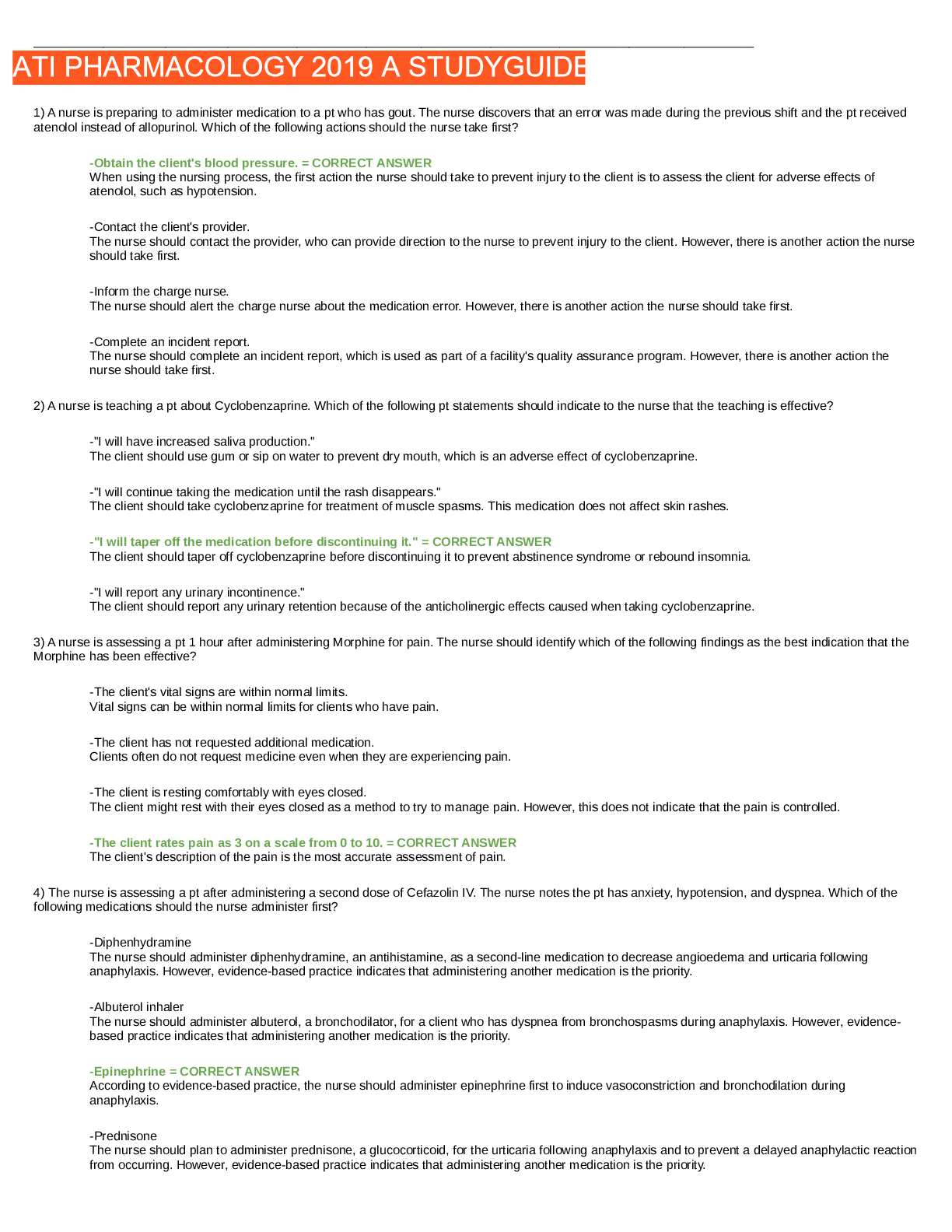
 (2).png)
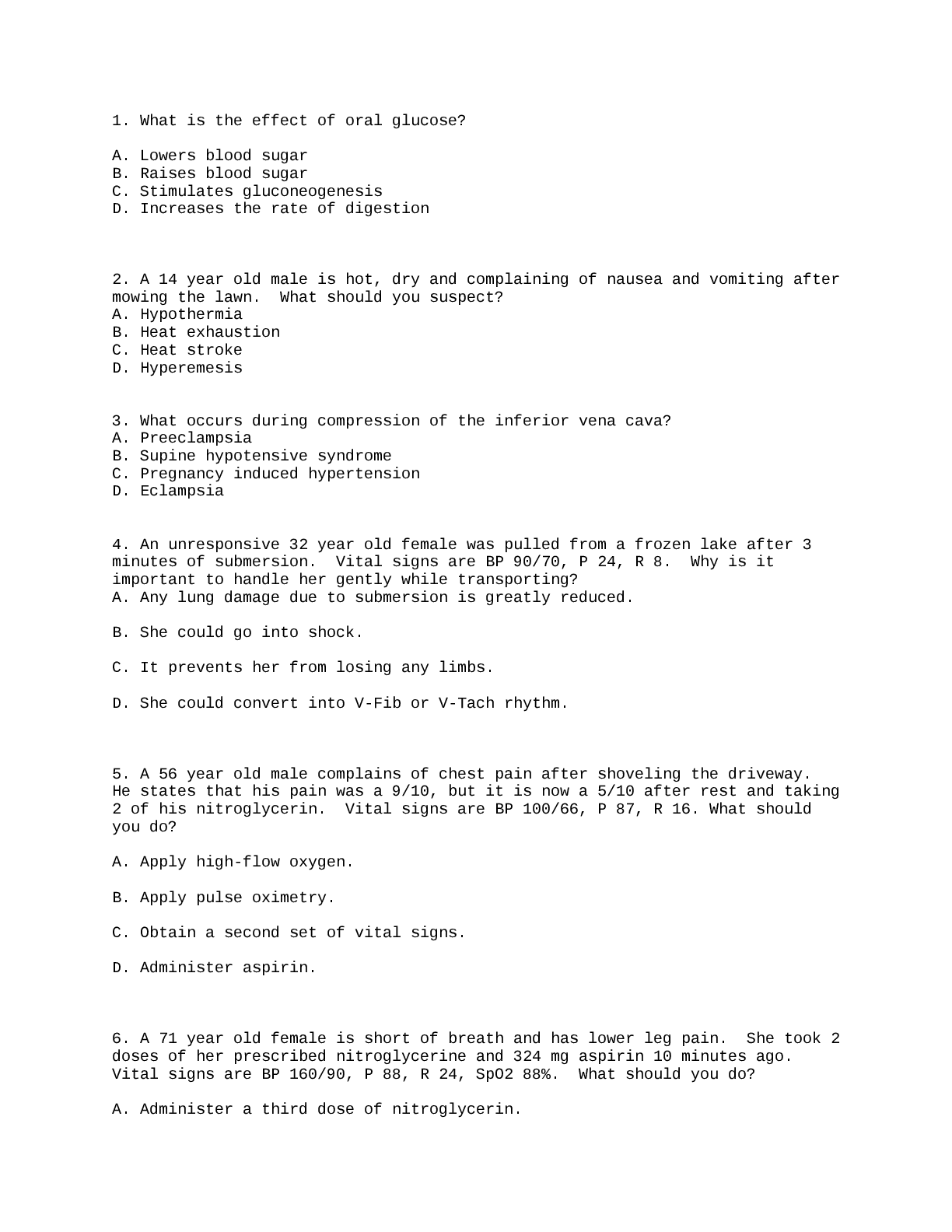
.png)
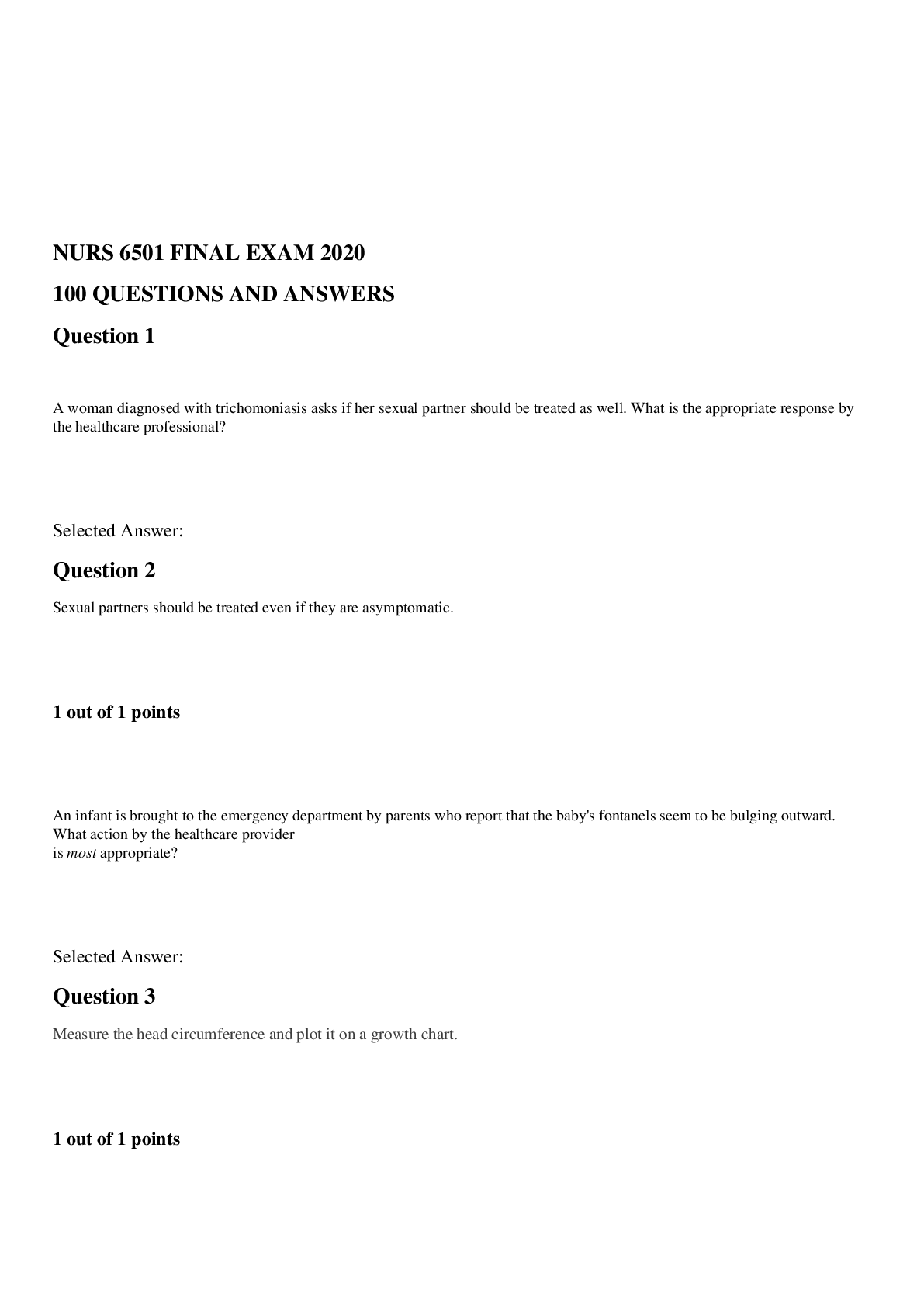

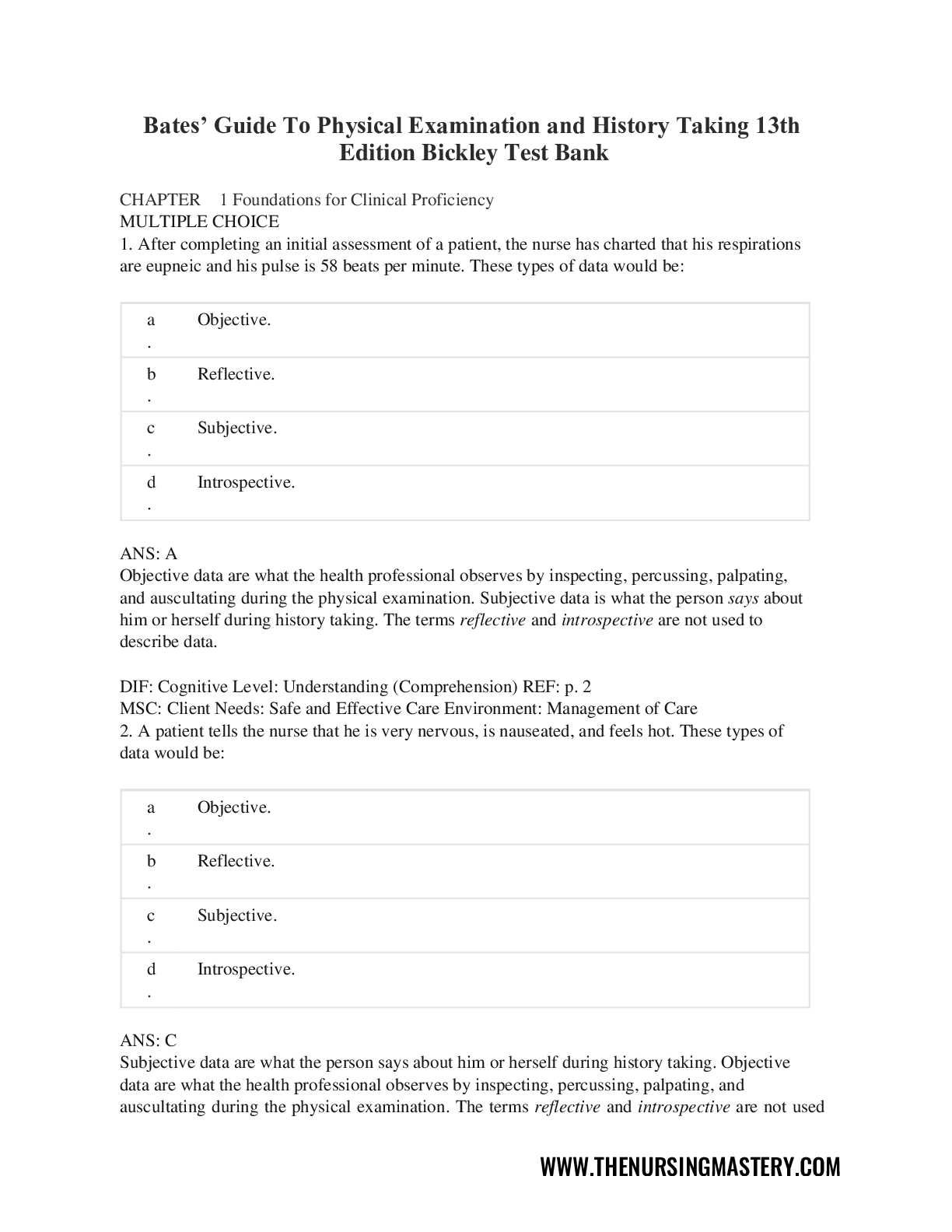
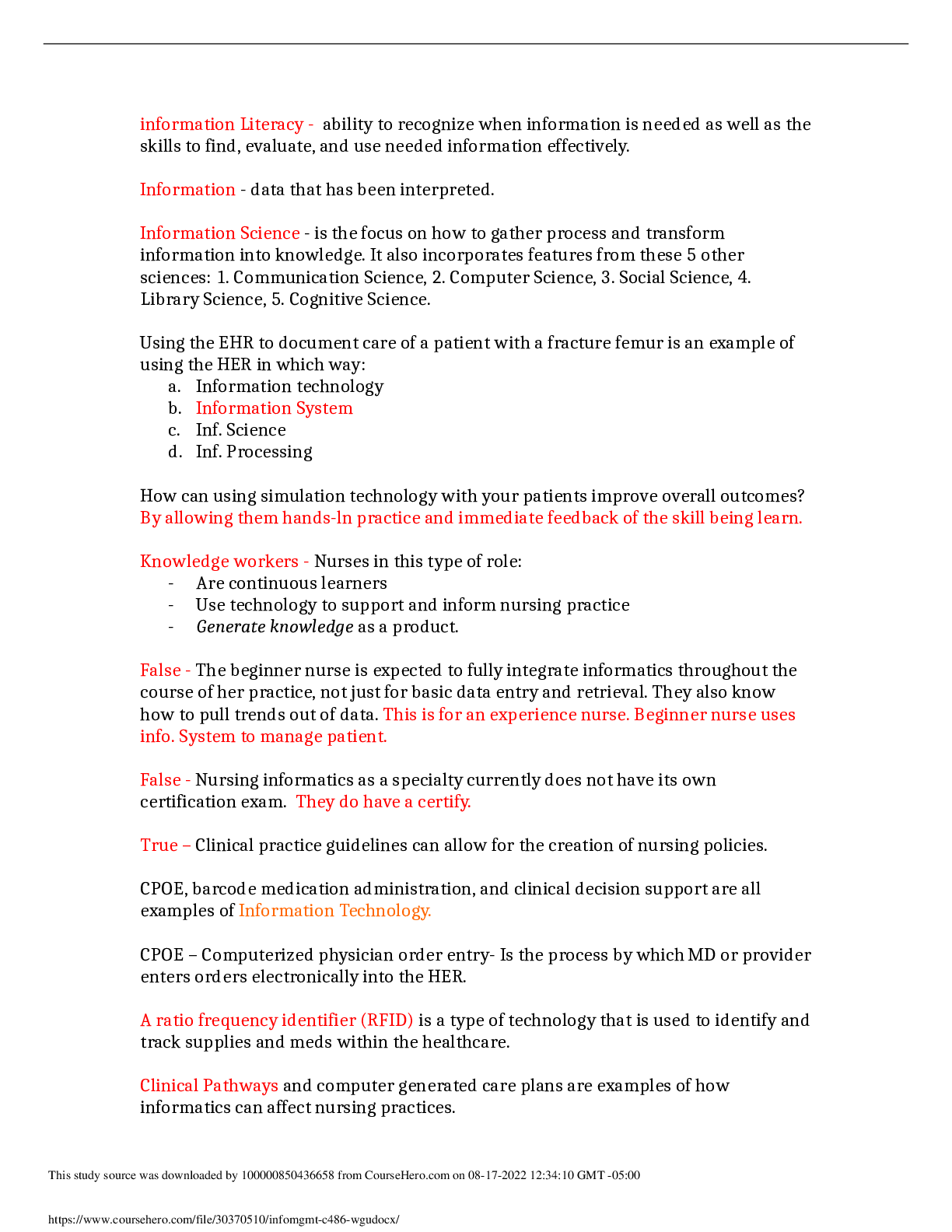
 (1).png)
